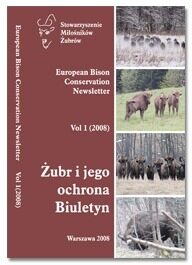Neospora caninum in European bison – an awarness of the problem
Keywords:
European bison, Neospora caninum, reproduction, disturbancesAbstract
The prevalence of antibodies to Neospora caninum was examined in European bison (Bison bonasus L.) living mainly in Poland and abroad. At first, sera of 320 European bison collected from 1986 to 2003, different ages and sexes, were tested for N. caninum antibodies using ELISA test. Positive antibody responses were found in 23 bison (prevalence 7.3 %). Additionally, all positive sera were tested by Western blot to verify the ELISA results. The Western blot results confirmed the presence of antibodies to Neospora tachyzoites antigens in all ELISA positive sera. Thereafter, additional 200 sera collected in 2004–2O08 were tested. High antibody responses were found in 26 bison (prevalence 13 %). Our results indicate strongly the presence of N. caninum in the European bison in Poland at least since 1988 to date and suggest that further researches are needed to evaluate the existence of a sylvatic cycle of N. caninum. Interestingly, among 30 bison living abroad in 10 tested sera antibodies
against N. caninum were found. The effect of the infection on the health status and conservation of European bison is discussed.
Downloads
Published
How to Cite
License
Copyright (c) 2008 European Bison Connservation Newsletter

This work is licensed under a Creative Commons Attribution 4.0 International License.





